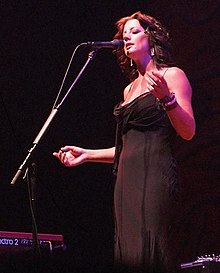Piano Sheets > Sarah Mclachlan Sheet Music > Adia (ver. 4) Piano Sheet
Adia (ver. 4) by Sarah Mclachlan - Piano Sheets and Free Sheet Music

About the Song
Other avaliable versions of this music sheet: Version 1 Version 2 Version 4
"Adia" is a song by Sarah McLachlan that originally appeared on her 1997 album Surfacing. It was co-written by McLachlan and her longtime producer, Pierre Marchand. The song reflected the apology to her best friend for becoming involved with, and later marrying, her friend's ex-partner. "Adia" was the third of four songs from "Surfacing" to be released as a single. It was her most successful US single, peaking at number three on the Billboard Hot 100. The single, released July 7, 1998, contains four tracks: the radio mix of "Adia", the Surfacing mix of "Angel", the original studio version of "I Will Remember You" (as opposed to the live version included on the Mirrorball album, also released as a single), and a live version of "Building a Mystery". McLachlan was nominated for Best Female Pop Vocal Performance at the Grammy Awards of 1999 for "Adia", losing to Celine Dion's "My Heart Will Go.
Download this sheet!
About the Artist

Random article
The essentials of piano sheet music Most people have the notion that sheet music is a very complicated notation and reading it very difficult. However, this is not true as understanding sheet music piano is just a matter of transcribing the various musical notes written.
Uses of sheet music
Piano sheet music is nothing but piano notes written in standard notations. You can avail such free sheet music online from various websites. The main use of sheet music piano is to help aspiring musicians recreate the same sequence of notes as performed by the composer of the piece. It is a method where a specific musical composition is recorded in written form using music notes. The ultimate aim of reading sheet music is to recreate the same score in as accurate a manner as is possible.
(More...)
